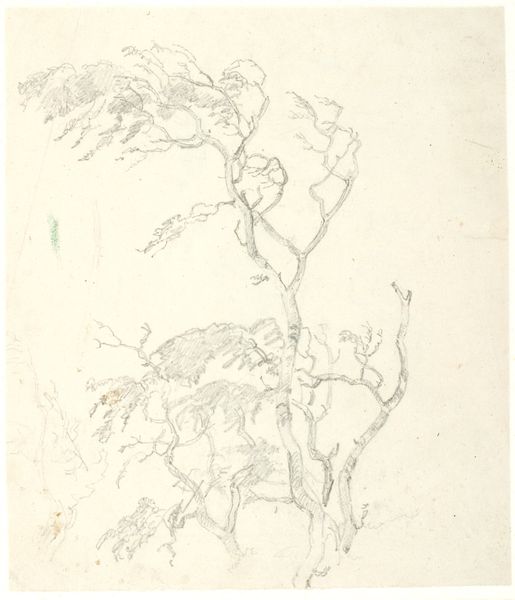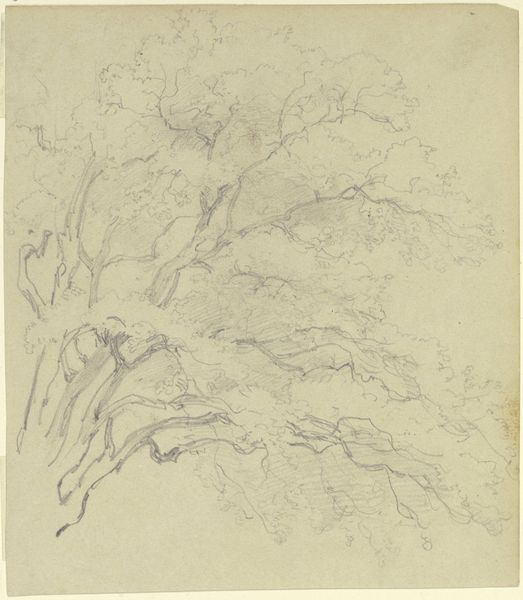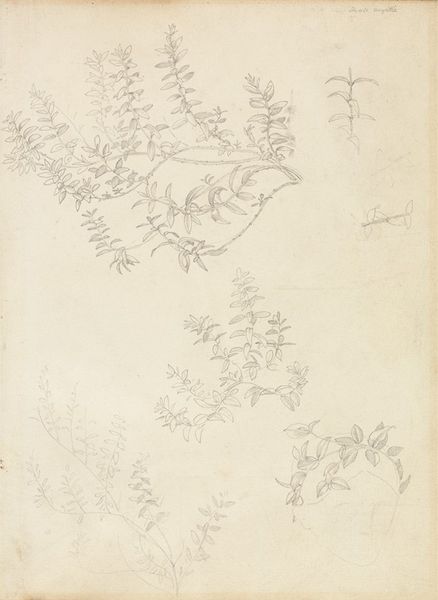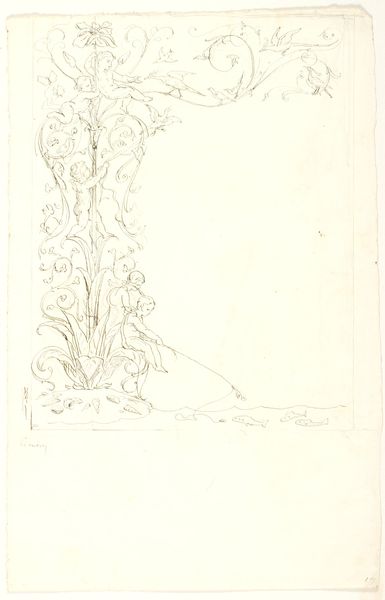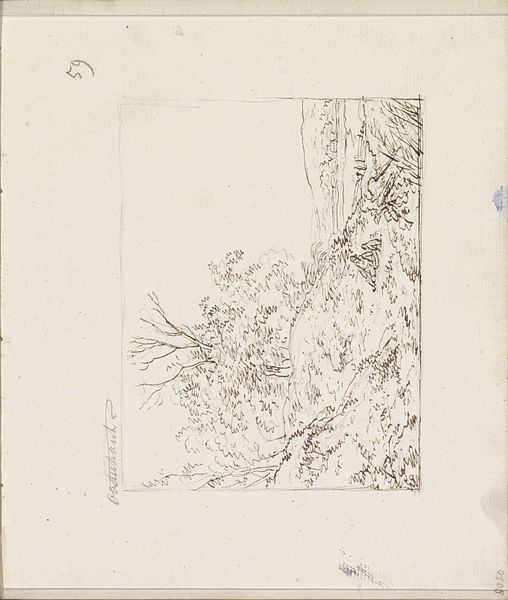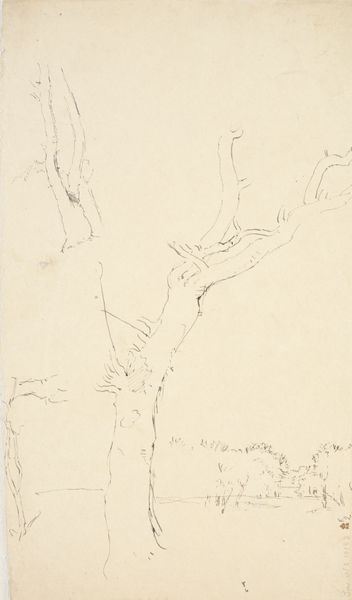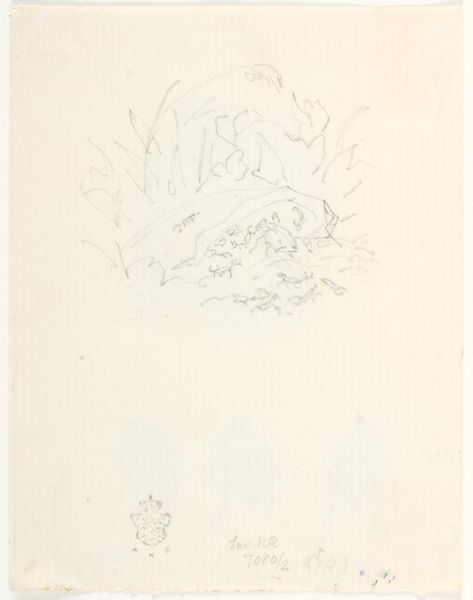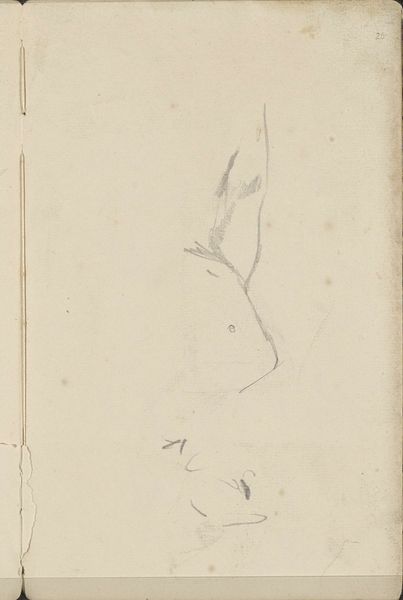
drawing, paper, pencil
#
drawing
#
organic
#
pen sketch
#
pencil sketch
#
paper
#
pencil
#
line
Dimensions: height 454 mm, width 214 mm
Copyright: Rijks Museum: Open Domain
Editor: So this drawing is titled "Ontwerp voor aardewerkdecoratie: struisveren," which translates to "Design for earthenware decoration: ostrich feathers." It’s attributed to Theo Colenbrander, probably created sometime between 1920 and 1928, using pencil and pen on paper. It has this delicate, almost ephemeral quality to it... What stands out to you when you look at it? Curator: Immediately, I'm drawn to the process embedded in this work. Colenbrander, likely contemplating mass production of these earthenware decorations, is caught in this tension. The pencil and pen – the immediate tools – betray a kind of experimental labour. What kinds of economies would it produce or allow? The sketch isn’t the ‘art,’ but a step in an attempt to use this “organic” subject for applied industry. Editor: Interesting! It does feel like a really raw, immediate thought process, a means to an end… so it is also capturing that period as people were using more automation for creation of the art object. Curator: Precisely. Consider the materiality: cheap paper, readily available pencils. The ‘high art’ here isn't in the completed product; it’s diffused across the means of its would-be reproduction. Think of it as labour that makes and that is unmaking at the same time. A rejection of 'Art'. Editor: So the artistic value isn't in the object itself, but the exploration and democratization of design? I wonder how his artistic peers reacted. Curator: Exactly. This work isn't just about a decorative motif, but a document – in how this type of organic exploration enters the field of product design using this material, labor, and means for the age of industry and mass manufacture of objects. Editor: I see it now. The “preciousness” shifts from the final piece to the sketch, because it reflects both its purpose and material composition, the cultural backdrop in the act of creation. Curator: Yes, what seemed so unassuming shows Colenbrander was more revolutionary than traditional, if not on purpose then definitely in affect. We also touched on why he made this study on the cheap. I leave you to imagine.
Comments
No comments
Be the first to comment and join the conversation on the ultimate creative platform.



